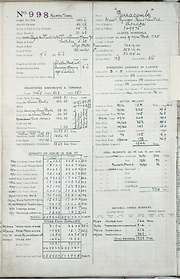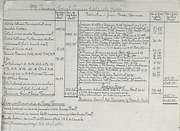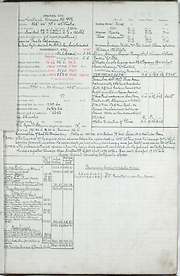 Hartlepool Sports & Leisure
Hartlepool Sports & Leisure
- Cinemas, Theatres & Dance Halls
- Musicians & Bands
- At the Seaside
- Parks & Gardens
- Caravans & Camping
- Sport
 Hartlepool Transport
Hartlepool Transport
- Airfields & Aircraft
- Railways
- Buses & Commercial Vehicles
- Cars & Motorbikes
- The Ferry
- Horse drawn vehicles
 A Potted History Of Hartlepool
A Potted History Of Hartlepool
- Unidentified images
- Sources of information
- Archaeology & Ancient History
- Local Government
- Printed Notices & Papers
- Aerial Photographs
- Events, Visitors & VIPs
 Hartlepool Trade & Industry
Hartlepool Trade & Industry
- Trade Fairs
- Local businesses
- Iron & Steel
- Shops & Shopping
- Fishing industry
- Farming & Rural Landscape
- Pubs, Clubs & Hotels
 Hartlepool Health & Education
Hartlepool Health & Education
- Schools & Colleges
- Hospitals & Workhouses
- Public Health & Utilities
- Ambulance Service
- Police Services
- Fire Services
 Hartlepool People
Hartlepool People
 Hartlepool Places
Hartlepool Places
 Hartlepool at War
Hartlepool at War
 Hartlepool Ships & Shipping
Hartlepool Ships & Shipping

Parracombe Voyage History
We currently have no voyages listed for this vessel.
Related items :
 Parracombe - Launch
Parracombe - Launch
NEW CARGO STEAMER
TO-DAY’S LAUNCH FROM GRAY’S DOCKYARD
Northern Daily Mail. 22 Nov 1927
Messrs. Wm Gray and Co., Ltd., today launched from their Dockyard the handsome steel screw steamer Parracombe, which is being built to the order of Messrs. Pyman Bros., Ltd., London.
The vessel, which is of the open shelter deck type, will take the highest class in Lloyd’s Register and is of the following dimensions: Length overall 419ft. 6in.; breadth, 54ft. 2 ½ inches, depth moulded to upper deck, 27ft. 6 ½ in.
She is constructed on the cellular double bottom principle, with deep channel framing, and has six watertight bulkheads, together with a steel centre line bulkheads, and wood shifting boards dividing the holds for grain carrying. The fore and aft peaks, are suitable for water ballast.
Spacious accommodation for the officers is arranged in a steel house amidships. The engineers being berthed in large steel houses alongside casing with the necessary mess room and lavatory accommodation. Large airy accommodation is arranged in the poop for the crew including separate dining rooms.
For the quick handling of cargo, ten steam winches are provided to works ten derricks. A direct-acting steam windlass forward and steam steering gear amidships are also fitted.
The topmasts are suitable for the Manchester Canal Bridges.
The vessel will be completed in all respects as a first-class cargo steamer, including an efficient wireless installation and electric light throughout.
The Machinery
Triple-expansion engines having cylinders 26 ½ in., 44in., and 73 inches diameter by 48 in. stroke, and four boilers working at a pressure of 180lbs., will be supplied by the Central Marine Engineering Works of the builders, and a number of auxiliaries of the “C.M.E.W.” type, will be installed including an evaporator, winch condenser with duplex circulating pump, singlex harbour feed pump, high pressure feed heater, general service pump, ballast pump, combined drain and scumming tank.
The ship and machinery are being built under the supervision of Mr. William Henderson on behalf of the owners, and the ceremony of naming the steamer Parracombe was gracefully performed by Mrs. W. Haigh Pyman, of Parracombe, Wimbledon.
Amongst those present at the launch were Mr. W. Haigh Pyman (director, Pyman Bros., Ltd.), Mrs. F. Cresswell Pyman, Capt. J. W. Clark (George Pyman and Co.), Capt. J. J. Hall, Mr. W. L. Gilmore(Lloyd’s Register), Mr. W. A. Gates, Miss Henderson, and Mrs. Proud.
The builders were represented by Sir William Gray, Bart (chairman), Mr. F. C. Pyman (director), Mr. T. S. Simpson (general manager), and Mr. J. Young (yard manager).
 Parracombe - Lives lost 1941
Parracombe - Lives lost 1941
Parracombe left the UK on 17 April 1941 in convoy OG-59 with a cargo of 21 cased Hurricane fighters & their spares & a crew of 47. She departed the convoy to proceed through the Straits for Malta & struck a mine & sank off Cap Bon on 2 May 1941. 18 survivors were made prisoners at Bizerta. 29 lives lost.
Lives lost May 1941: Ahmed Ali, fireman/trimmer, 46; Ali Abddulla, fireman/trimmer, 59; Ali Hamed, greaser, 50; Bowen, Walter, chief engineer, 65, Swansea; Brown, Robert, sailor, 18, Leith, Edinburgh; Campbell, Forbes Deensmuir, 4th engineer, 20; Fage, Ernest John, able seaman (Royal Navy) aged 22, Walthamstow, Essex; Hunt, Jack, able seaman (Royal Navy); Hunt, Victor Eric William, able seaman (Royal Navy) aged 19, Wickford, Essex; Methana Hassan, fireman/trimmer, 44; Nagi Darfullah, greaser, 41; Patterson, William Robert, lieutenant commander, 31, Cardiff; Patton, Andrew William, able seaman, 46 (King’s Commendation for Brave Conduct); Reah, John, sailor, 19, South Shields; Rosenz, Max George, steward, 49, Lancing, Sussex; Thomas, David Dan Haydn, 3rd engineer, 20, Adpar, Wales; Turnbull, Stephen, able seaman; Wickham, Arthur, cook, 62, Cardiff; Wilson, George, able seaman, 29.
More detail » Pyman S.S. Co. Ltd.
Pyman S.S. Co. Ltd.
George Pyman was born in May 1822 in Sandsend, North Yorkshire. He went to sea as an apprentice and by 1843 he was Master of the vessel Nameless.
He married Elizabeth English in 1843 and they had two daughters and seven sons.
In 1850 he left the sea and the family settled in West Hartlepool where he went into partnership with his brother-in-law Francis English, as grocers and ship chandlers. In about 1854 he changed direction and went into partnership with Thomas Scurr as shipbrokers for the local collieries. They owned shares in a number of sailing vessels. Other shareholders included Francis English, John Smurthwaite, Thomas Wood & Ralph Ward Jackson.
Thomas Scurr died in 1861 and George then formed his own company as George Pyman & Co. In 1865 he purchased his first steamship, the George Pyman, and gradually shares in the brigs were sold off. Eventually the company became the largest owners of steamships in the north of the U.K.
In 1873 Thomas Bell of Newcastle joined as a partner in the firm. From 1879 the company opened branches in Hull, Grimsby, Immingham and Glasgow. When George retired in 1882 the Bell family took over the running of the company.
Pyman, Watson & Co. was set up in Cardiff in 1874 by John, one of George’s sons along with Thomas Edward Watson and Francis and Frederick, another two of his sons, set up Pyman Bros. in London in 1903. Some of these companies ships were registered in West Hartlepool.
George was elected a Poor Law Guardian in 1861, an Improvement Commissioner in 1868, and was sitting on the Durham County Bench from 1872. In 1879 he was appointed Vice Consul for Belgium and in 1888 was elected the second Mayor of West Hartlepool. In 1895 he received the honour of being made a Freeman of the Borough. George died in November 1900 at his home, Raithwaite Hall.
There is a wealth of further information in Peter Hogg’s book ‘The Pyman Story’.
More detail » SS Parracombe
SS Parracombe
Stanley Maude Livingstone Sutherland and his step brother James Omand McIntyre both from Leith, Edinburgh were part of the crew running the blockade into Malta when the SS Parracombe hit mines off Cape Bon on the 2nd May 1941.
On that date there was a terrific explosion, than a series of explosions that tore the bottom out of her and carried away the bridge, this killed all hands on deck. Thirty Officers went down with the ship, and eighteen survived the explosion.
Stanley and James were two of the survivors, Jimmy's right leg was broken in three places and two toes were blown off. They were picked up by a Vichy French Seaplane which landed at the naval base Bezerta.It is believed they were imprisoned at Fort of Kef, before they escaped.
Four decorations came to the ship. The Master David L Hook, Wales, and the second deck officer, John Wilson of London received the Distinguished Service Cross. Sailors Stanley Sutherland and James McIntyre were the first merchant seaman to be awarded the Distinguished Service Medal.
The medal listing for Sutherland DSM, Stanley ML is held by the National Archives, Kew. DOB 01 March 1918 Ref number BT 395/1/94339 Discharge number R.204069.
On the February 9th 1942 they all met again in Buckingham Palace with other blockade runner and were presented to The King, to receive their decoration from his hand.
More detail »










